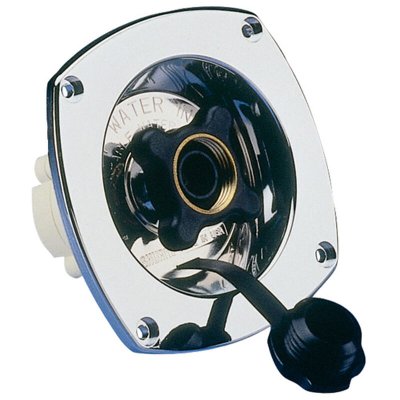Having had city water for 17 years, at least while living aboard, I probably had 4 or 5 water system leaks develop. 3 were back to back to back because the water heater. The water heater that came with my last liveaboard boat, for some reason had the output nipple get so hot it would cause the vinyl tubing to fail and split. All 3 times I woke up in the morning and thought the salon felt warm and steamy. Sure enough, a couple inches of hot water in the bilge and the tubing split. The exact same thing could have happened with the water pump on and no one aboard. Fortunately with my background, the bilge pumps were in top condition and overkill for a city water leak and easily kept up. Yes I know the fresh tanks aren't usually so large to sink the boat, but if you have one working bilge pump and you visit the boat regularly or liveaboard...I doubt a city water malfunction will sink the boat
If a city water hose delivers on average 5-6 gallons a minute, that's only about 300-400 gph which a tiny bilge pump can either keep up with or if it can't and only does half....it would take quite a few hours before my 40 footer's bilge would be near full. That is only IF a total hose failure occurs and what are those probabilities?
As far as pressure regulators, I agree a good home type is a good idea.... with a pressure gauge. With the pressure gauge, one can see what the water pressure at the marina is and if really high at any time during the day, well then using the tank/pump may be a good idea. The west coast with it's high terrain may have high city water pressure, but I really can't remember ever seeing above 50 or 60 psi at an East coast marina in my whole life. Nor at any of the RV campgrounds I have stayed at over the years.
I also agree a "gallon" limiter is a good idea (just disconnect/remove before freezing temps...broke a couple that way). Turning them up to 200 gallons or so is a good start to see how much you actually use per day/week.
For those that have water tanks that can last all week, I can see not using city water full time.... for those with less than 75 or so.... just depends on how much you like filling your tanks. Being extra vigilant is a small price that filling tanks at an inopportune time.

